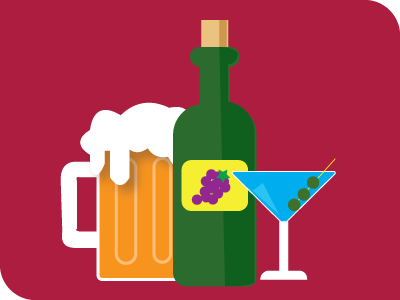Impaired Driving -OLD
What is impaired driving?
According to the National Safety Council, impaired driving means that a person’s ability to safely operate a motor vehicle is compromised by alcohol or other drugs. This can be called drunk driving, driving while intoxicated (DWI), or driving under the influence (DUI).
It has been estimated that in the past than 20 years, drivers with alcohol concentrations at or above 0.08 have been involved in traffic accidents resulting in about 10,000 lives lost every year.
Since the 1990’s there have been rules put into place for a drug and alcohol free transportation industry in the United States. CDL drivers may be subject to testing to ensure that they are not driving impaired.
This Overview of Drug and Alcohol Rules was put out by the Federal Motor Carrier Safety Administration (FMCSA).
Consequences
The CDC estimates that 29 people in the United States die in alcohol related motor vehicle crashes each day. That is one death every 50 minutes. This adds up to a cost of more than $44 billion in losses per year.
The United States Congress recognized the need for a drug and alcohol free transportation industry, and in 1991 passed the Omnibus Transportation Employee Testing Act, requiring DOT agencies to implement drug and alcohol testing of safety-sensitive transportation employees.
Here are some resources and testing rules that may be useful:
Sobering Facts: Alcohol-Impaired Driving (CDC)
Resources
In 2015, Maryland’s ignition interlock program prevented nearly 4,000 trips where the driver’s BAC was greater than 0.08, which is the legal limit in Maryland.
All states have implemented ignition interlock programs to manage interlock issues and monitor offenders who are required or eligible to install them. The MVA answers frequently asked questions about this program.
Maryland’s Ignition Interlock Program, which began in 1989, is monitored by the Maryland Department of Transportation’s Motor Vehicle Administration (MVA)
These informational sheets from MyCarDoesWhat.org also help to explain some vehicle safety systems that may be able to alert you if you start to drift.
What is impaired driving?
According to the National Safety Council, impaired driving means that a person’s ability to safely operate a motor vehicle is compromised by alcohol or other drugs that change the function of the brain and body. This can be called drunk driving, driving while intoxicated (DWI), or driving under the influence (DUI).
Since 1990’s there have been rules put into place for a drug and alcohol free transportation industry in the United States. CDL drivers may be subject to testing to ensure that they are not driving impaired.
This Overview of Drug and Alcohol Rules was put out by the FMCSA.
What are the laws and consequences of impaired driving in Maryland?
Familiarizing yourself with the laws and consequences of impaired driving, especially as a CDL driver, is vital. Here are some resources, testing rules, and tools that can help you stay safe and sober on the road:
Sobering Facts: Alcohol Impaired Driving (CDC)
Overview of Drug and Alcohol Rules | FMCSA (dot.gov)
Federal Drug and Alcohol Testing Regulation (dot.gov)
What is Marylan’s Ignition Interlock Program?
Maryland’s Ignition Interlock Program, which began in 1989, is monitored by the Maryland Department of Transportation’s Motor Vehicle Administration (MVA). which began in 1989, is monitored by the Maryland Department of Transportation’s Motor Vehicle Administration (MVA). All states have implemented ignition interlock programs to manage interlock issues and monitor offenders who are required or eligible to install them. The MVA answers frequently asked questions about this program.





